Italian developer Milestone’s MotoGP 23 joins the ranks of bike-based games in their portfolio. But MotoGP 23 comfortably stands apart from the rest in terms of quality.
Maintaining a yearly release schedule poses challenges when it comes to continuous innovation. The limited timeframe of 12 months is generally acknowledged as insufficient for creating an entirely new video game from scratch. As a result, developers often take an iterative approach, gradually building upon previous releases.
In the case of last season’s MotoGP video game, it introduced the intriguing NINE historic documentary mode but the game lacked updates in crucial areas such as career mode and online multiplayer.
In response, MotoGP 23 is a much leaner and meaner machine, since it takes a different approach by eliminating distractions and focusing on what truly matters. The game’s emphasis on essential elements has resulted in a more refined and enjoyable experience.
MotoGP 23 Changes
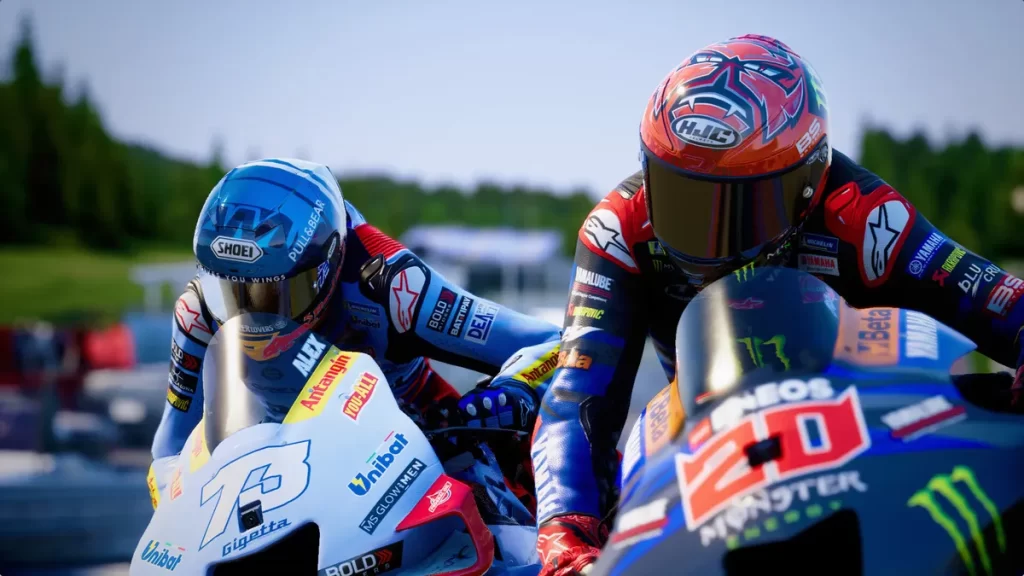
Notable additions for this season’s MotoGP23 include updated riders and liveries. While this may be an anticipated feature, it is not groundbreaking. However, it is worth noting that in previous seasons, the official game did not initially launch with the current bike models. Typically, they were introduced through a post-release patch. This time, however, the top-class bikes come equipped with the expected aero appendages right from the start, which is a significant improvement.
Furthermore, the game introduces two new tracks: India’s Buddh International Circuit and Kazakhstan’s Sokol International Racetrack. Unfortunately, the actual race for the latter track has been canceled, but it is still featured in the game. This situation is reminiscent of Finland’s Kymi Ring, which was included in MotoGP 21 and 22 but experienced event cancellation before the riders had the chance to compete on the track.
In a significant development, MotoGP 23 introduces dynamic weather with the flag-to-flag rule for the first time. If a race starts under dry conditions and then begins to rain, players are required to visit the pitlane and switch to bikes equipped with rain tires. However, it is disappointing that the pitlane process is automated. In the Moto2 and Moto3 categories included in the game, a race stoppage is implemented.
Dynamic weather adds an X factor to the game
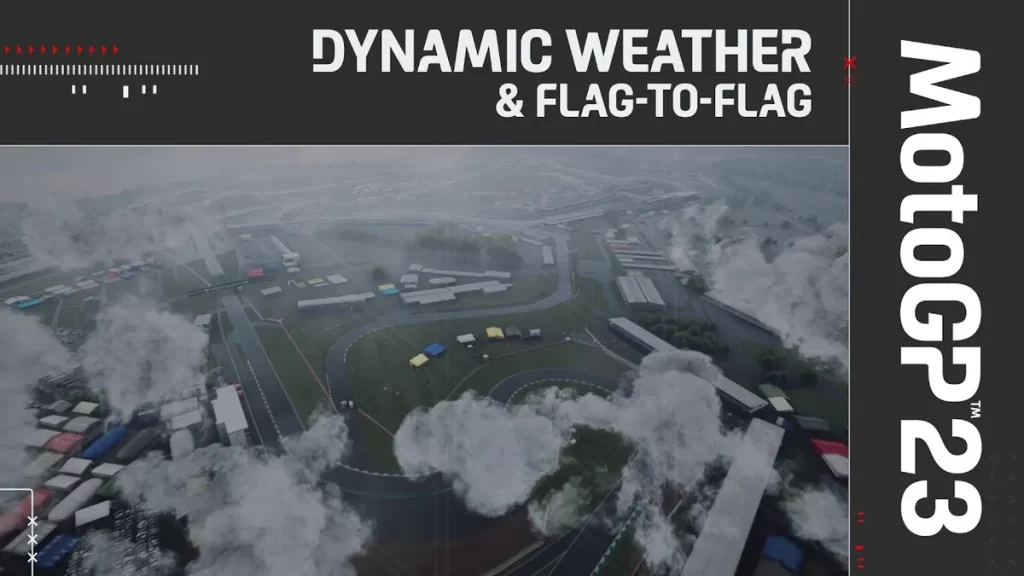
The implementation of dynamic weather adds an exciting element to career events, particularly when longer race distances are set. It offers the option for players to demonstrate bravery by not pitting, and AI-controlled opponents may choose different pit strategies. Additionally, reflecting the real series, players now have the option to participate in 50 percent-length sprint races on every weekend or disable them altogether, providing flexibility according to their preference.
Although there are some enjoyable new features, certain aspects remain unchanged, most notably the riding experience, which undergoes only minor modifications.
One notable addition is the neural artificial intelligence assists, which differ from traditional auto-brake or throttle systems. Instead, they serve as a supportive guide, enabling players to fully accelerate only when it is appropriate. This unique system sets MotoGP 23 apart from other racing games, and although it may feel weird initially, it can be considered an innovative and promising addition that we hope will continue to improve in future iterations.
However, the persistent issue of the aggressive tendency to stoppie under braking still persists. Thankfully, this can be mitigated through adjustments in the bike’s setup and the availability of guided options specifically designed to reduce this effect. However, for players who are unaware of these options, it can be a source of frustration. In Moto3, there is also a tendency to unintentionally wheelie out of corners, which seems disproportionate for a low-powered, momentum-focused formula.
Movement & flow of riding
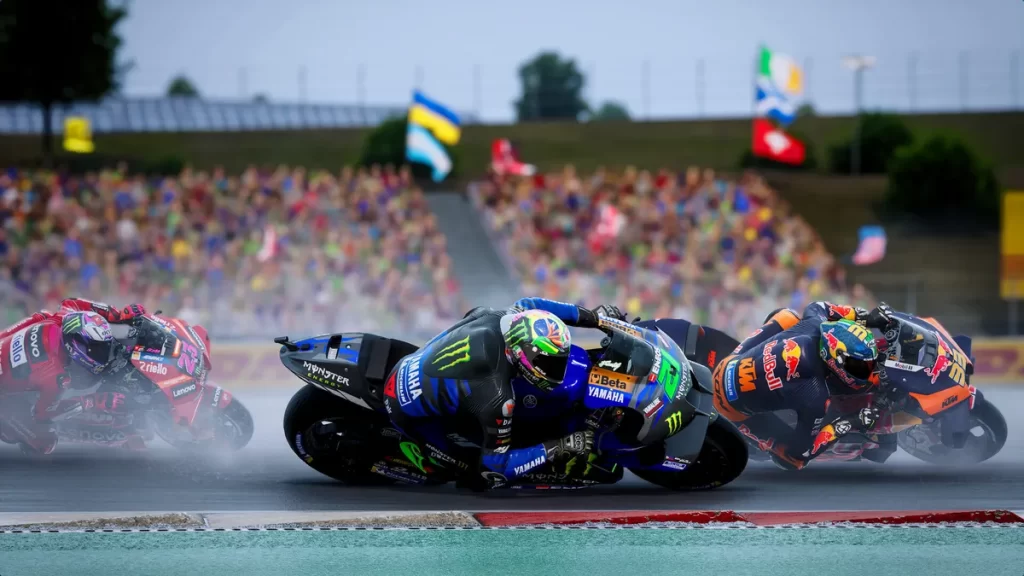
In MotoGP 23 there is a noticeable rigidity in the bike’s behavior at the corner exit when applying power. It feels as if the chassis becomes rigid and unresponsive as soon as you engage the throttle. If you apply power even slightly early, instead of the rear tire breaking away, the front end tends to push wide as the frame lifts. Interestingly, it appears that computer-controlled opponents do not suffer from the same issue.
Nevertheless, once you fine-tune the bike’s setup and make necessary adjustments, we believe that the overall riding experience has improved compared to the previous installment.
When combined with the learning curve, the behavior of your AI rivals can sometimes appear erratic, resembling a bobbing rubber duck at sea, particularly during the initial lap of a race.
They can exhibit unpredictable actions, such as weaving on a straight during a qualifying session or persistently pressuring you from behind. At the start of a race, you may find yourself surrounded by a group of riders who attempt to force you off the track. On the Sokol circuit, they appear to be faster compared to other venues relative to your selected difficulty level, and in Thailand, they take unconventional racing lines.
However, by finding the right balance of assists, adjusting the skill level of your competitors, and familiarizing yourself with the tracks over time, there is still enjoyment to be found. It’s important to be patient while adapting to these challenges. Additionally, we hold hope that the AI behavior will be further refined through future updates.
Career Mode is back
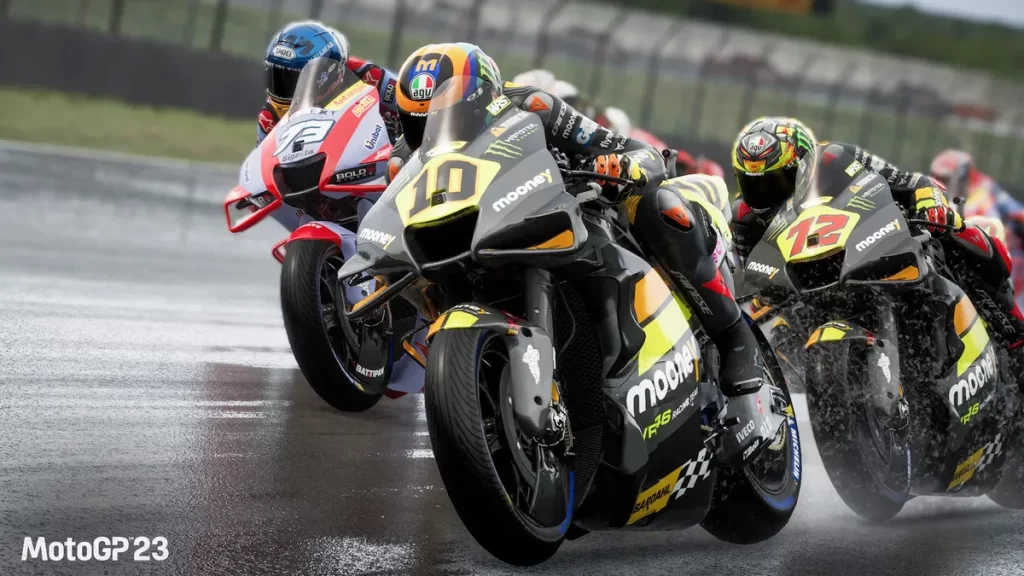
Despite reservations about certain on-track behaviors, the game is redeemed by its new modes. For the first time in several releases, including the WorldSBK game, there is a revamped career mode that promises a delightful experience for players who prefer single-player gameplay.
Although the underlying systems remain similar, there are no major additions like a rider market, likely due to licensing restrictions. However, the design has received a visual upgrade, the social media-inspired “wall” feature adds a touch of realism, and we found the rivals system to be engaging.
In the career mode, you begin as a Moto3 rider and have the opportunity to move up to higher categories if you meet certain performance goals in a series of races. Once you advance, you start as the second rider in the team, but if you outperform your teammate, you can become the team leader. This progression culminates in a pivotal moment where defeating your teammate secures your status as the leader.
The same concept applies to rider contracts. If you wish to join a new team, their current second rider becomes your rival, and you must outperform them throughout the season. It’s a neat feature that adds an extra layer of competition.
Furthermore, you constantly earn experience points and rewards, allowing you to level up as you progress. As the lead driver, you gain the ability to influence upgrades during mid-season and pre-season testing.
In this iteration, performance-enhancing parts are earned through races and applied during test sessions. Instead of a skill tree, players receive packs of parts that can enhance the performance of their bikes. This introduces a different approach to upgrading and customizing your bike compared to previous versions.
The addition of ranked online multiplayer to MotoGP 23
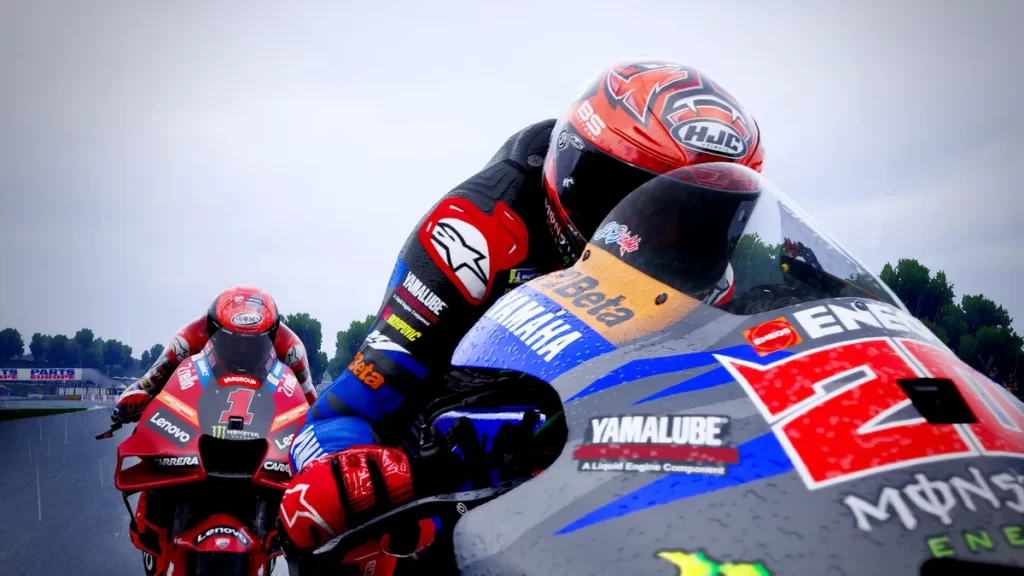
It’s not the only mode that has undergone a significant transformation. Fans, including us at Traxion.GG, have been requesting it for several years, and it has finally made its way into the game.
No, we’re not talking about cross-platform multiplayer, as that feature was already introduced in MotoGP 22 through a patch. You can easily identify whether a player is on the same platform as you by their name, and the lobby system remains unchanged. What we’re referring to is the introduction of ranked online progress, which is a new addition that players have been eagerly waiting for.
A new game mode called LiveGP operates similarly to daily races found in popular driving games like Gran Turismo 7. It features a playlist of online races that shows upcoming events, and you can join them at scheduled times. As you perform well in these races, you progress through a ranking system consisting of up to 13 levels. Each time you participate in an event, you are matched against players who are at similar ranks.
This marks the first time such a mode has been introduced in a motorcycle game, and it is a highly appreciated addition. It adds incentives and excitement to online racing, which was previously lacking in standard lobbies.
The best in the series?!
While we remain somewhat uncertain about whether the MotoGP games can truly provide the ultimate riding experience in terms of physics, all doubts are cast aside when you manage to execute a flawless and speedy lap at Mugello.
Notwithstanding this hesitation, MotoGP 23 brings a welcome depth to the table with its variable weather conditions, fresh content, revamped career mode, and the potential of a long-term online system. By finding your own customized setup, this game becomes a worthwhile upgrade for loyal MotoGP fans, offering notable progression. However, it’s important to keep in mind that instant success comparable to Pecco Bagnaia may not be achievable right from the start.
Also Read:
- Amnesia: The Bunker review
- Best Armor Sets in Legend of Zelda: Tears of the Kingdom (& How to Get Them)
- Bitcoin and Crypto: Brace for Parabolic Price Move as Ethereum Institutional Interest Surges
- 10 Best Mortal Kombat games ranked!
- All about Madden 24: Cover, features, and Madden 24 deluxe edition
FAQs
No, MotoGP 23 is currently available only on specific platforms, such as PlayStation, Xbox, and PC. Unfortunately, cross-platform play is not supported, meaning you can only play with others who are on the same platform as you.
Yes, MotoGP 23 includes a wide range of real-world tracks from the Motorcycle Grand Prix circuit, allowing you to race on iconic circuits such as Mugello, Sachsenring, and Circuit of the Americas. Moreover, the game features an extensive roster of riders, including those from the current MotoGP season, with their authentic team liveries.












